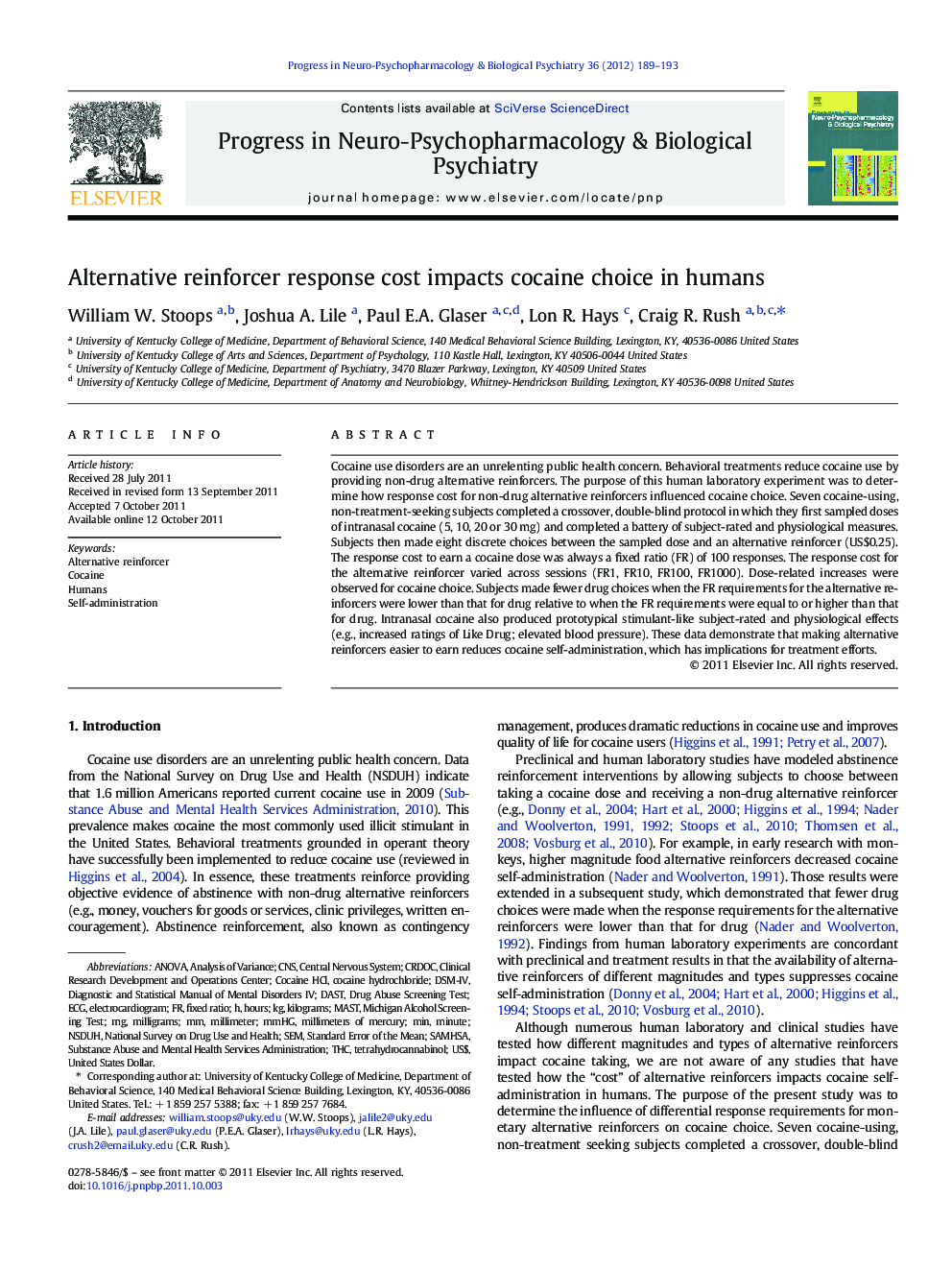| Article ID | Journal | Published Year | Pages | File Type |
|---|---|---|---|---|
| 5845434 | Progress in Neuro-Psychopharmacology and Biological Psychiatry | 2012 | 5 Pages |
Cocaine use disorders are an unrelenting public health concern. Behavioral treatments reduce cocaine use by providing non-drug alternative reinforcers. The purpose of this human laboratory experiment was to determine how response cost for non-drug alternative reinforcers influenced cocaine choice. Seven cocaine-using, non-treatment-seeking subjects completed a crossover, double-blind protocol in which they first sampled doses of intranasal cocaine (5, 10, 20 or 30Â mg) and completed a battery of subject-rated and physiological measures. Subjects then made eight discrete choices between the sampled dose and an alternative reinforcer (US$0.25). The response cost to earn a cocaine dose was always a fixed ratio (FR) of 100 responses. The response cost for the alternative reinforcer varied across sessions (FR1, FR10, FR100, FR1000). Dose-related increases were observed for cocaine choice. Subjects made fewer drug choices when the FR requirements for the alternative reinforcers were lower than that for drug relative to when the FR requirements were equal to or higher than that for drug. Intranasal cocaine also produced prototypical stimulant-like subject-rated and physiological effects (e.g., increased ratings of Like Drug; elevated blood pressure). These data demonstrate that making alternative reinforcers easier to earn reduces cocaine self-administration, which has implications for treatment efforts.
âºThis study tested how alternative reinforcer response cost impacts cocaine choice. âºDose-related increases were observed for cocaine choice. âºFewer drug choices were made at lower alternative reinforcer response costs. âºMaking alternative reinforcers easier to earn could reduce cocaine use.
